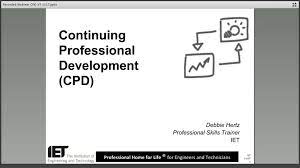Introduction
Continuing Professional Development (CPD) is critical for professionals in various industries. It refers to a lifelong learning process that focuses on maintaining and enhancing their knowledge, skills, and abilities. As we navigate the ever-evolving landscape of professional careers, the significance of CPD cannot be overstated. This article offers a perspective from trainers and advisers on making CPD count to maximize its benefits.
Importance of CPD
As trainers and advisers, we understand that CPD plays an essential role in professional growth. It offers several advantages:
1. Staying updated: CPD keeps professionals abreast with the latest advancements in their industry, ensuring they maintain a competitive edge.
2. Compliance with regulatory requirements: Many industries have mandatory CPD standards to ensure professionals remain compliant with regulations.
3. Developing new skills: Workplace environments change rapidly, necessitating professionals to acquire new skills to remain flexible and adapt.
4. Professional credibility: Keeping up-to-date with one’s industry is vital for enhancing a professional’s credibility among peers and potential clients.
5. Career progression: A robust, continuous learning record strengthens one’s career prospects and opportunities for advancement.
Making CPD Count
For individuals seeking meaningful professional growth through CPD, there are some crucial considerations:
1. Aligning personal and organizational goals: Professionals should seek opportunities that align with both their personal aspirations and the organization’s objectives. This ensures a dual advantage for personal growth and workplace success.
2. Reflective practice: Harnessing the power of reflective practice encourages critical thinking about experiences, identifying areas of improvement or enhancement.
3. Maximizing learning experiences: Ensure value addition across formal (e.g., workshops, seminars) and informal (e.g., webinars, articles) methods as well as personal interactions to foster blended learning experiences.
4. Prioritizing networking opportunities: Networking is integral to career development and can complement the traditional learning approach. It allows professionals to learn from others and gain valuable knowledge and insights by connecting them to experts in their field.
5. Measuring outcomes: Tracking progress consistently gives a direction for growth, identifies achievements and areas for improvement, thus enabling goal-setting.
Trainer and Adviser’s Role
As trainers and advisers, we have a pivotal role in guiding professionals on their CPD journey. Our recommendations include:
1. Encouraging a culture of learning: By fostering an environment of learning within organizations, we can encourage professionals to take greater ownership of their development.
2. Addressing individual needs: Training sessions should cater to the specific goals and aspirations of learners to maximize learning potential.
3. Offering guidance on diverse learning platforms: By providing guidance on the available learning platforms, we enable our clients to make informed choices about their professional development.
4. Support with goal setting: Assisting clients in setting realistic goals aligned with their aspirations is crucial.
Conclusion
Making CPD count involves intentional effort from both the individuals seeking growth and the trainers and advisers supporting them. To derive maximum benefit from CPD programs, it is essential to be proactive, focused on aligning goals, embracing diverse learning experiences, building networks, and reflecting on personal growth.





